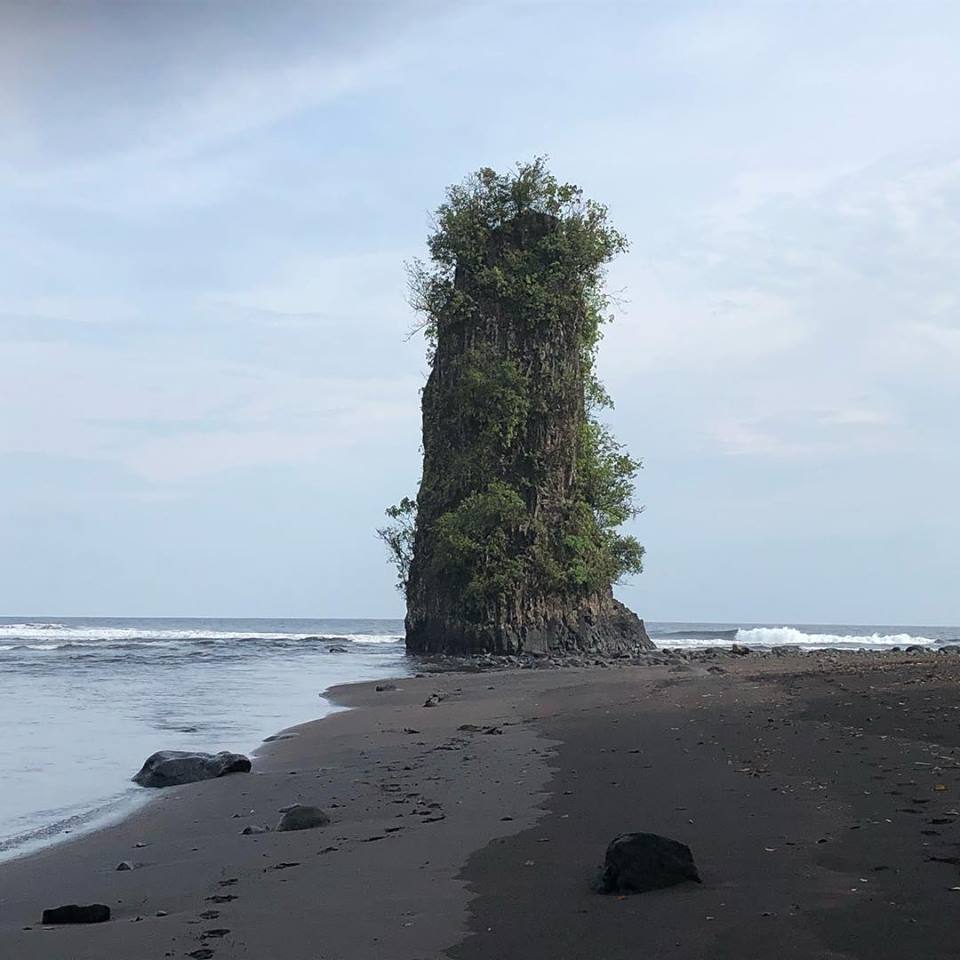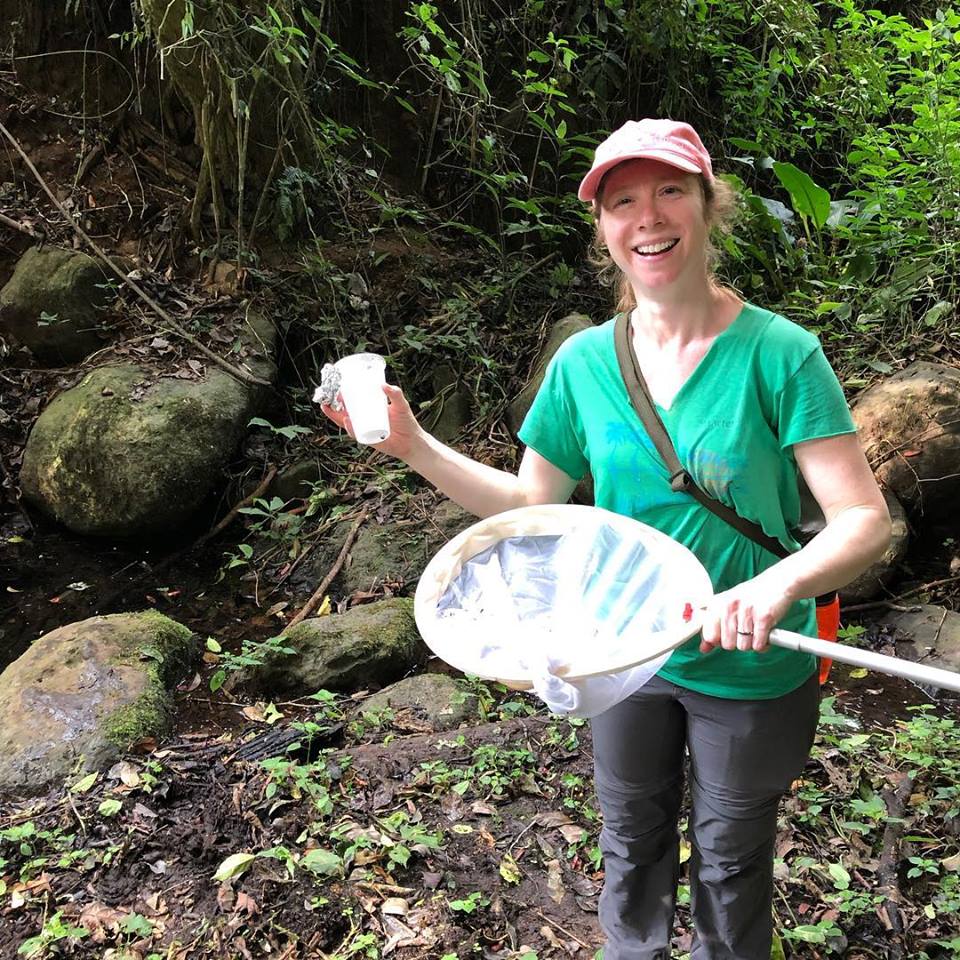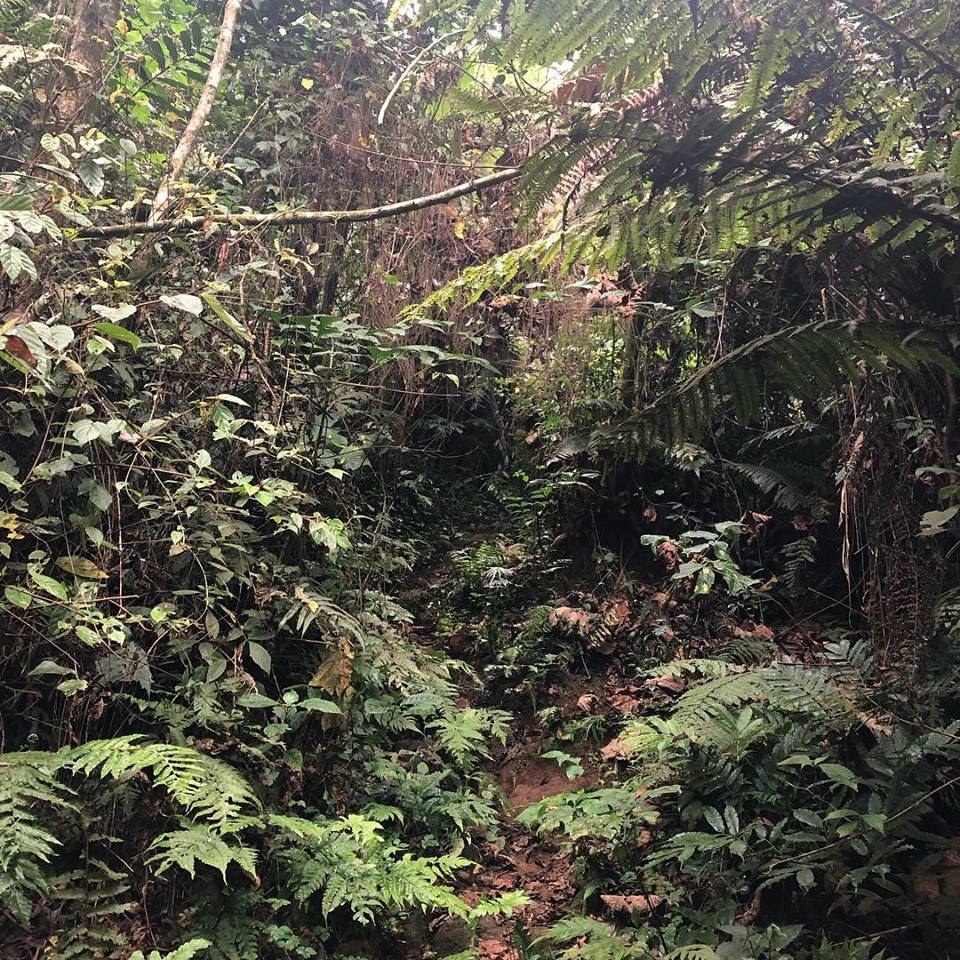Protecting Bioko's Biodiversity
By Stefanie Kroll, PhD
March 21, 2019
My first few days are spent in the capital, Malabo, at the Study Abroad house with the Drexel University students, Mary Katherine “Katy” Gonder, PhD, director of the Bioko Biodiversity Protection Program, David Montgomery, BBPP national manager, and their truly dedicated staff. About two-thirds into the academic quarter, everyone seems just as busy and lively as I imagine they were in week one, which speaks to the value and importance of their conservation and education work on this tropical island.
During the lazy 20-hour journey, you picture the little places you’ve seen in photos. But it’s always a surprise, and more impressive, when you finally land and get into the streets.
Bioko, an island that forms part of the country of Equatorial Guinea, is a little known place. It is simultaneously close to being paradise, while fraught with social, economic and political issues that are slowly being tackled by national and international problem solvers. This dichotomy means there is so much great research and work that can be done with Equatoguinean and international collaborators from several sectors.
Started by Gail Hearn, PhD, over 20 years ago, the program’s mission is “to conserve Bioko Island’s biodiversity, especially its critically endangered primates and nesting marine turtles, through continuous research and the development of economically self-sustaining programs that demonstrate the value of conserving Equatorial Guinea’s unique wildlife and wild spaces.”
 The program aims to protect the natural environment of Equatorial Guinea, like this beautiful and wondrous shoreline feature.
The program aims to protect the natural environment of Equatorial Guinea, like this beautiful and wondrous shoreline feature.
Hearn told me how, when she first began studying the island’s primates, the locals referred to her and her students from Arcadia University as “las chicas,” or the girls, standing out in the towns near their surveys. Hearn has retired from Drexel and the Academy’s Board of Trustees, but she is still a close advisor to Gonder.
She tells me there is still so much that we can do to help protect the natural environment of Equatorial Guinea. The island is home to seven endangered or vulnerable primate species, four vulnerable to critically endangered sea turtle species, plus nearly 200 bird species, with over 30 of these creatures being endemic to Bioko (not to mention the bats, plants and the relatively undocumented insect fauna).
 The author collecting macroinvertebrates and stream samples for study as part of Drexel’s Bioko Biodiversity Protection Program.
The author collecting macroinvertebrates and stream samples for study as part of Drexel’s Bioko Biodiversity Protection Program.
As I prepare to go out and look at the streams to get a feeling for study designs and research questions, I have the pleasure of hearing about all the different activities of the Bioko Biodiversity Protection Program. That includes coordinating the work of the national park service that is in charge of the protected areas; supporting women’s artisan groups in training and marketing their products; collaborating with the government on conservation of primates and sea turtles; working with the national university to train Equatoguineans in research and monitoring, and more.
This list doesn’t even include all the amazing educational and cultural activities of the Drexel Study Abroad Program, led by Gonder and Dani Ascarelli with their amazing Resident Director Mackenzie Grapes.
 Getting a first-hand look at ecosystems the Bioko program and national forest service are working hard to protect.
Getting a first-hand look at ecosystems the Bioko program and national forest service are working hard to protect.
The colorful African dress patterns next to Western brand outfits, multiple malaria treatment centers, walled compounds containing Spanish-tiled houses, and the juxtaposition of shanties next to large, elaborate houses, and even a Maserati in our neighborhood, Caracoles, say much about the social, political and economic extremes here in the capital.
Next, I’ll be heading to the mountain town of Moka, near the Biao Forest preserve, where I’ll talk with Gonder’s graduate students and the study abroad professors. Then I’ll trek to the beach at Moaba, on the coast of Biao’s southern drainage, to get a first-hand look at the ecosystems that BBPP and the national park service are working so hard to protect.
As night falls now, I’ll sit on the porch and watch the lizards take their last walks under skies filled with hundreds of fruit bats flying over.
Text and images by Stefanie Kroll, PhD, Academy Watershed Ecology Section Leader and Drexel Assistant Research Professor, Department of Biodiversity, Earth and Environmental Science